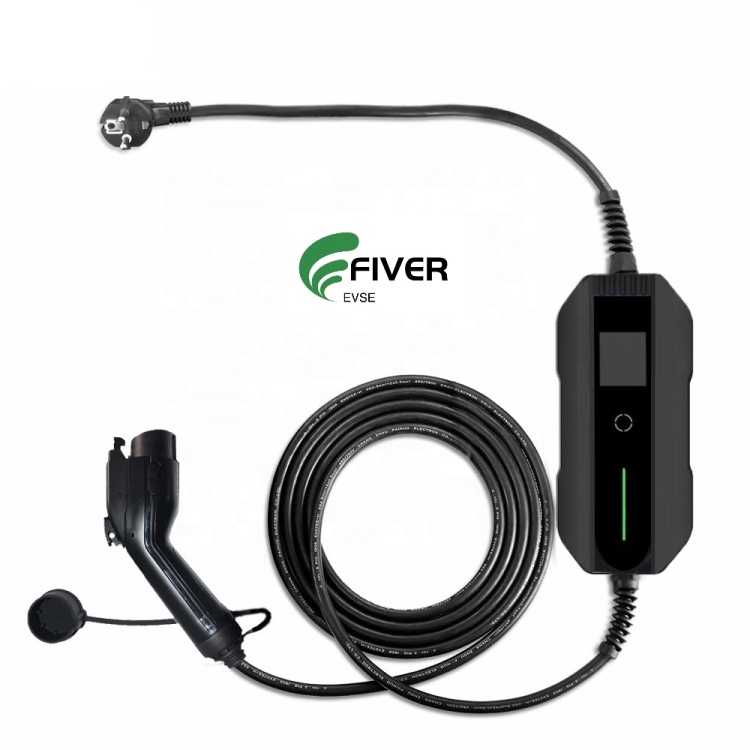Company news
How to Choose Your Home EV Charger ?
Looking for home electric vehicle charging equipment and don't really know which to pick? Don't worry, you're not alone. There are a lot of EV home charging stations available today and most people don't really know what features to look for in their search for the best home charging solution.
Before we start, we need to clarify some terminology. Electric vehicle supply equipment, or "EVSE," is actually the proper term for what many call "EV chargers" or "EV charging stations." The reason "charging station" is not the proper term is because the actual charging equipment is built into the car, and the EVSE really just provides a safe supply of electricity to the vehicle.
However, we've decided to use the term "charging station" or "charger" here because that's what most people recognize the equipment as. Even the companies that sell EVSE refer to them as "chargers" or "charging stations" on their websites.
It's also important to note this post is specific to the North American market. The electricity supply in Europe and most other parts of the world does not use a 120-volt supply as their standard household current like we do in North America. As such, there is no "level 1 charging" in Europe. Also, in Europe, the charging cable is often not tethered to the unit for level 2 charging, and thus, the equipment is very different than what is used in North America.
How to identify your car is a type 1 or type 2 ? The following Picture might help.
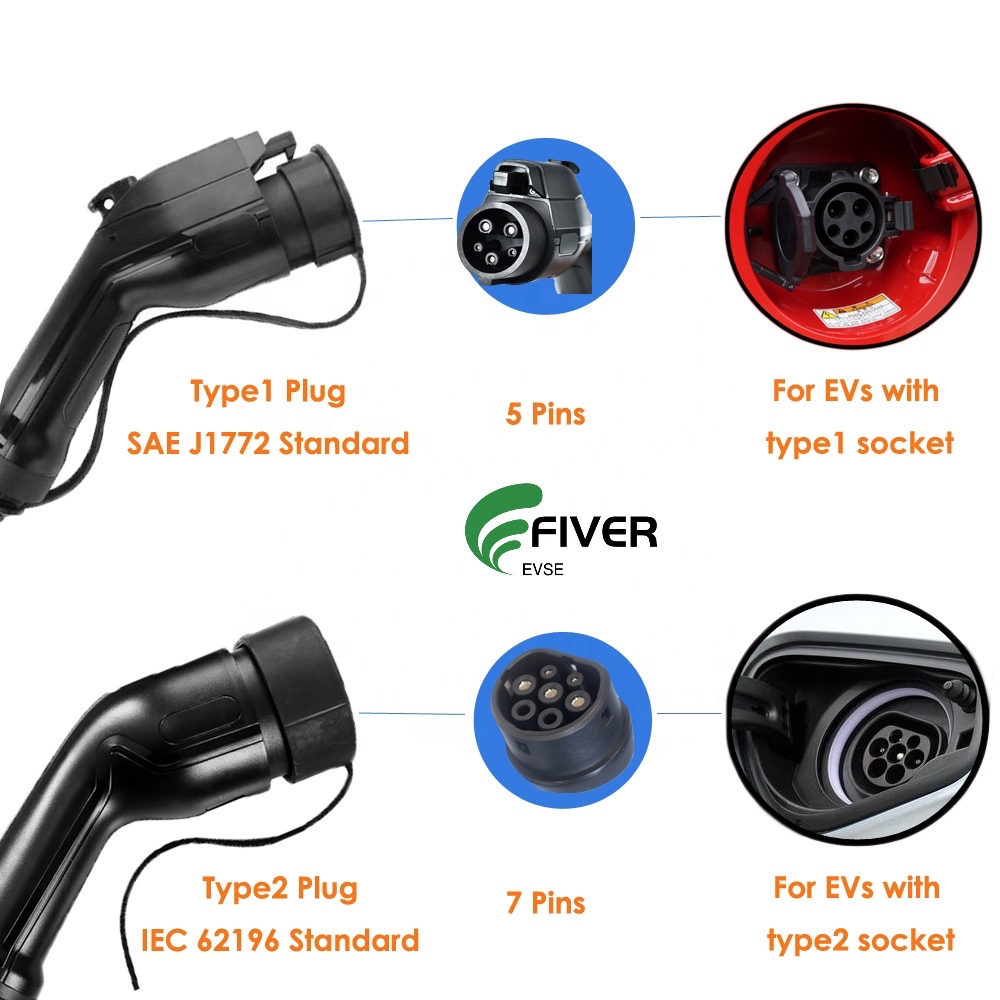
Let's begin by explaining the different levels of home AC charging, as well as the two different connectors that are used.
Level 1 vs. Level 2 - What's the difference?

Every electric vehicle sold today comes standard with a 120-volt level 1 portable charger (above). These chargers can be plugged into a simple household outlet, and don't require any special installation. Some manufacturers, like Tesla, for instance, come with a plug-in 120/240-volt Level 1/2 charger. These dual-voltage chargers can be used with either a 120-volt or a more powerful 240-volt outlet like what an electric dryer plugs into.
However, most manufacturers only provide a basic level 1, 120-volt charger, and offer a higher-powered level 2 unit for sale as an option. In order to recharge their EV faster, many owners choose to install a 240-volt electrical supply and level 2 charging station
Level 1 chargers will deliver between 3 and 5 miles of range per hour to a typical electric car.
Every other electric vehicle besides a Tesla made today uses the same connector for level 1 and level 2 charging. So, there's one plug for North America that everybody besides Tesla uses, and it's called the SAE J1772, and another plug that everyone uses in Europe called the "Type 2".
We mention this not to confuse, but to assure that any charging station you purchase in your native market will charge your electric car; you do not need to worry about buying the "wrong one". Additionally, while Tesla vehicles use a proprietary plug for level 1/2 charging, they can also use any other level 1 or level 2 charging station because Tesla provides an adapter with every car. These adapters allow Tesla to use charging stations with the non-proprietary J1772 connector.
Level 2 chargers increase the rate to a range of between 12 and 60 miles per hour.
Level 1 chargers will deliver between 3 and 5 miles of range per hour to a typical electric car. Level 2 chargers increase the rate to a range of between 12 and 60 miles per hour. However, that number will be limited to how much electricity the car's onboard charger can accept. The car is always in control of how much electricity it takes in, so you won't damage the vehicle if you buy a charging station that can deliver more power than the car can accept. In fact, many people choose to buy a charging station that can deliver more power than their current EV can accept, so they'll be ready if their next EV can charge at a higher rate.
There are low-powered level 2 chargers that are small and portable. Many of these are limited to a power delivery of 16-amps to 20-amps. These units will charge a typical EV at a rate of about 12 to 18 miles per hour. We'll be doing a side-by-side comparison on those portable units soon, but today we're going to focus on the best choices for medium-powered, wall-mounted charging stations.
The car is always in control of how much electricity it takes in, so you won't damage the vehicle.
These units typically deliver between 30-amps and 40-amps and will charge a typical EV at a rate of about 25 to 35 miles per hour. Most of today's wall-mounted level 2 charging stations come in both hard-wired and plug-in versions, which we'll discuss later. But before buying a level 2 charger, there are a couple of things you should consider.
Considerations Before You Buy
- Are you in control of your electricity supply? If you own your home, then there’s no issue because you can install your charging station without needing to ask for permission. If you own a condominium, you will probably have to get permission from the association, which can be troublesome. If you live in an apartment and have a reserved parking space or garage, you’ll likely need to get the landlord’s permission before installing the charging station, and there may be a limit on how much power is available to you in the garage.
- Does your electric service panel have enough spare capacity to allow you to install a dedicated circuit for the charging station? If you have any questions about whether or not you have enough spare capacity, consult a licensed electrician to inspect your service to let you know if you do.
- Where would you like it installed? You should locate the charging station close to where the inlet for the connector on the car is, and make sure the cable on the charger is long enough to reach the inlet without stretching. (we fiverevse is a manufacture we can custom make the cable length according to your needs, which can help you to solve this headache problem) Every EV has a different location for their charge port, so make sure you know where your charge port is located before installing your charging station.
Once you’ve confirmed that you can install the charging station and you know where you want it, it’s time to decide which charging station to buy. There are many choices available today, and not all charging stations are created equal. Let’s look at the different features that should be a consideration when deciding which station is the right one for you.
Power: Level 2 charging stations typically deliver anywhere from 16-amps to 80-amps.( we offer 16A and 32A Options for portable EVSE) This can make a huge difference in how quickly your EV charges. You probably don’t want to buy an underpowered charging station, only to need to buy a more powerful at a later date. Even if your current EV can only accept 16-amps (3.3kW) (you have these options: Option 1; Option 2; Option 3) you might want to consider getting a more powerful unit, because your next EV will likely accept at least 32 amps (7.7 kW) (you have these options: Option 1 ; Option 2 ; Option 3) For that reason, we recommend getting a charging station that can deliver at least 32-amps, preferably 40-amps if you want to future-proof your investment.
Cable Length: Some charging stations come standard with only a 16-foot cable. In our experience, that’s not long enough for most people. We recommend making sure the cable length is at least 20 feet in length, with 24-25 feet being ideal. we www.fiverevse.com is a manufacturer, we can customized the cable length according to customers' requirements.
Safety Certified: Since electric vehicle charging is a relatively new industry, there are a lot of small start-up companies making EV chargers, some of which haven’t taken the time or expense to have the device safety certified . These devices will be delivering a high amount of power to your car every day, and for many continuous hours and you want to be certain they are safe. That doesn't mean a charger isn't safe if it hasn't been safety certified, but it does bring it into question. we Fiver New Energy Technology Co.,ltd has been in this industry for nearly 10 years, we have rich experience in designing and manufacturing EVSE.
Our products are CE and TUV certificated, with all-round protections:
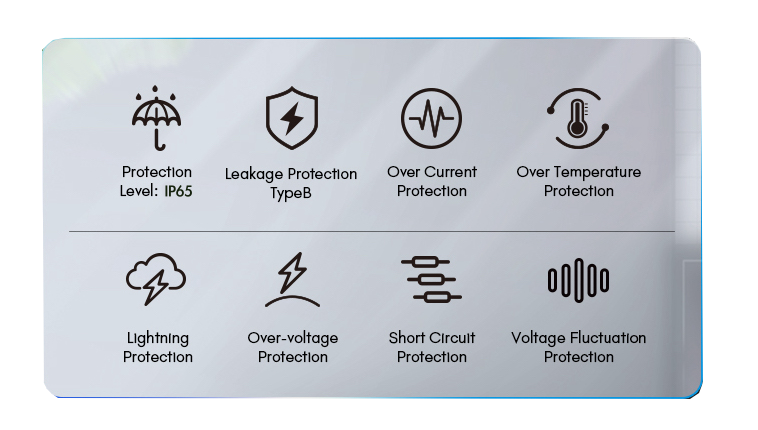
to ensure the safety of your car, the EVSE itself and the whole circuit.
Hardwired or Plug-In? Hardwiring simply means the unit is permanently connected to the electric supply, so you cannot remove it without opening the charger up and removing the wiring. A plug-in unit isn’t permanently connected to the electric supply, it simply plugs into an electrical receptacle. Chargers that deliver 40-amps or less can be plugged into a NEAM 14-50 or NEMA 6-50 outlet. Chargers that deliver more than 40-amps have to be hardwired and permanently mounted.
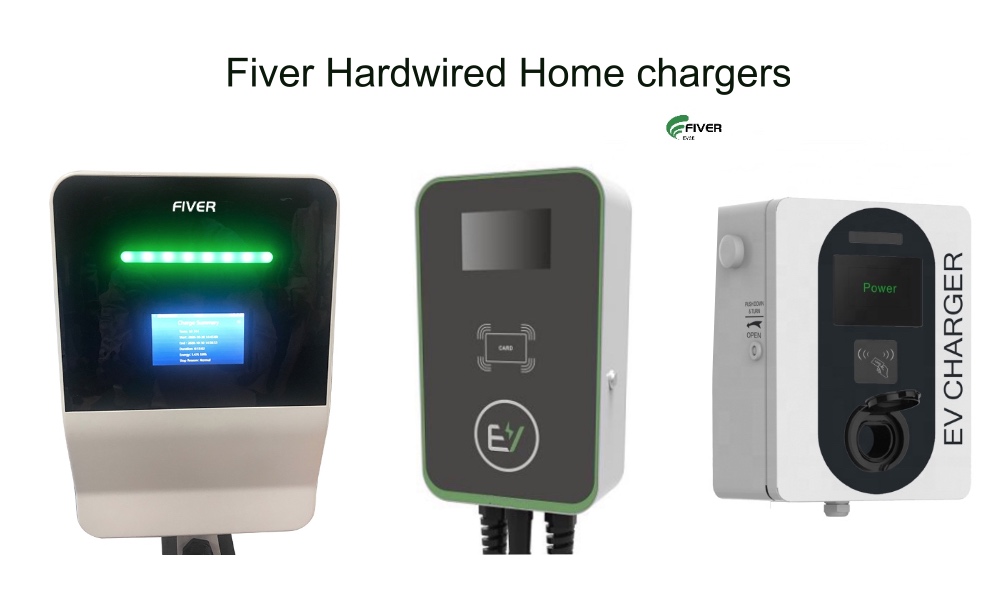
- You can unplug the unit and take it with you to charge at another location. Perhaps you have a 2nd home or visit family or friends that live far away. You can take a plug-in unit with you on long trips, but you cannot take a hardwired one. These aren't as small and as light as the lower-powered level 2 portable chargers, but they can be easily removed and taken to another location.
- Installation can cost less. Since all you need to have your electrician do is install a 240-volt outlet, the installation can be much less than if they have to hardwire and install the charging station.
- Since all you need is an outlet, you can have it installed before you buy the charging station, and have your garage ready to go when the charging station arrives. If you do this, make sure you have your electrician install a circuit that can deliver at least 32-amps. If you have the available capacity in your service panel, we recommend installing a 50-amp circuit that can deliver 40-amps to the vehicle.
- If there’s a problem with it, and you need to have it repaired or replaced under warranty, you just unplug it and ship it back. If it’s hardwired, you need to have your electrician come to remove it, cap the wires, and then come back to reinstall the new one.
Outdoor Rated & Connector Holster
Many people don’t have a garage to park their EV inside, so their charging station has to be mounted outdoors. Make sure the station is outdoor rated, but that’s not the end of the story. Most charging stations usually have either a NEMA 3 or NEMA 4 rating. Both are acceptable for outdoor use, but NEMA 4 adds a little more protection and adds protection against a direct blast of water from a hose. This could be useful in areas that get blowing rain or wind-driven snowstorms.
Some charging stations have a built-in or remote connector holster so the plug is protected while not in use. Other stations just direct the customer to drape the cable over the body of the unit and leave the connector hanging and unprotected. We recommend making sure the connector is properly protected when not in use. This will keep dirt, water, and other contaminants from entering the connector and possibly damaging it.
Smart or Dumb?
A “dumb” or perhaps "non-smart" charging station simply charges the car, period. And for some owners, that’s all they care about. A smart charging station has the ability to connect to WiFi or PLC and allow the owner to monitor their charging, check the power being delivered, review statistics from past charging sessions and even participate in utility demand response programs. This allows the owner to see exactly how much energy the car is using, so they can calculate how much the car costs to power. Without this feature, an EV owner can only guess how much the car is costing them to charge.
Some smart chargers can perform other tasks, like load-share so you can have two chargers on one dedicated circuit. If you want options like these, or you’re kind of a data geek, you’ll definitely want to spend a few more bucks and get a smart charging station.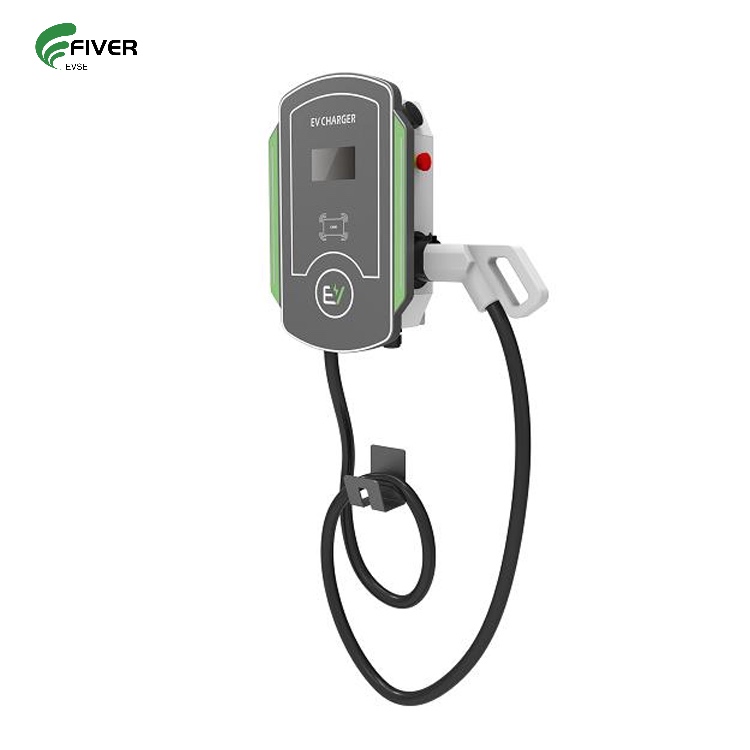
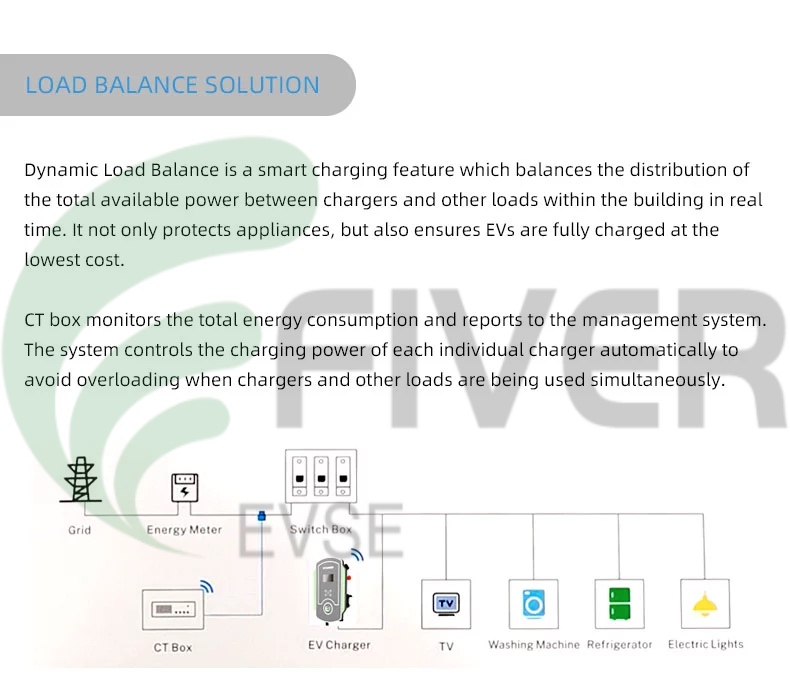
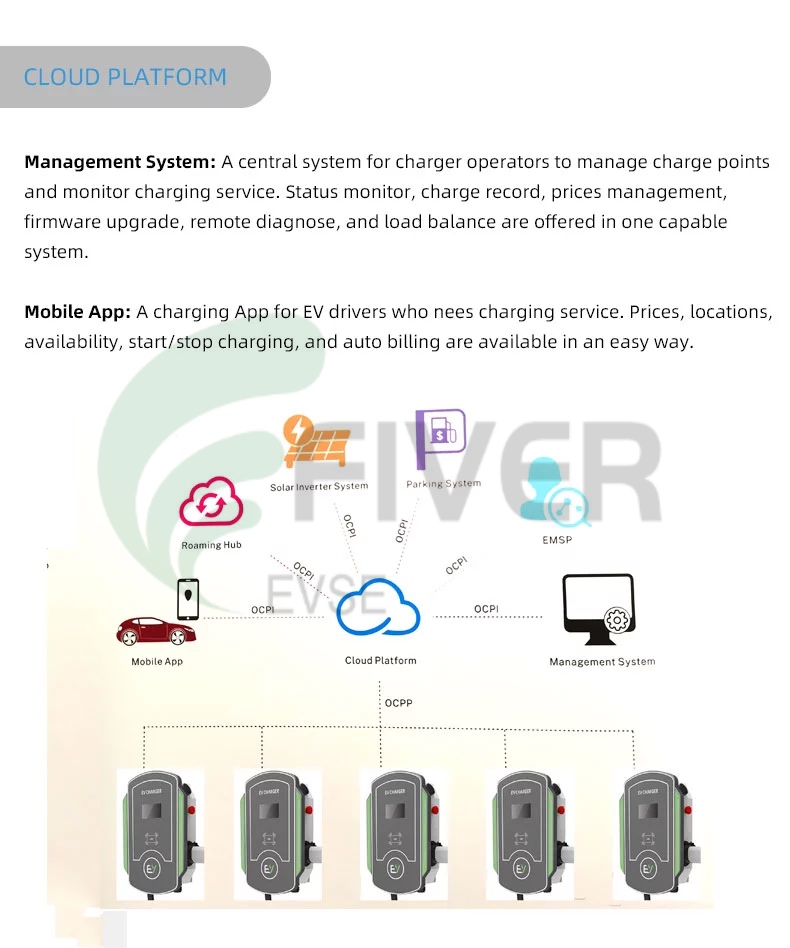
Cost
You can expect to spend somewhere between $400 and $1,200 for a high quality, safety-certified electric vehicle charging station. However, spending more doesn’t always get you more. We’ve also noticed many of the charging stations listed below often have special offers and discounts, so shop around a bit before you make a purchase.
For some, the least expensive charger that's built well and has a good warranty is the right choice, and we have a top pick recommendation that fits that profile. For others, having the ability to review charging session history, calculate the exact cost of charging, using Fiver F-22-CM to phone app control your charging and other smart-charging options are worth the extra cost, and we offer our top pick for these higher-end smart-chargers also.
FIVER FCE1-240V/32A

The FIVER FCE1-240V/32A is our Top Pick for Smart Chargers for a number of reasons. First, it delivers up to 32-amps of power, That means it can charge any EV sold today, even Tesla vehicles, at their maximum charge rate. It comes standard as a plug-in unit and is available with either a NEMA 14-50 or NEMA 6-50 plug, it has a 15-ft cable is standard( cable length can be customized), and it’s WiFi-connected with an app that has the most smart-charging features available. You can de-rate the power delivery, set reminders, and view all of your past charging sessions.
If you're looking for a smart EV charger, and the FIVER FCE1-240V/32A, you should definitely consider it.
FIVER F-22-LR (Wire Plug Type)
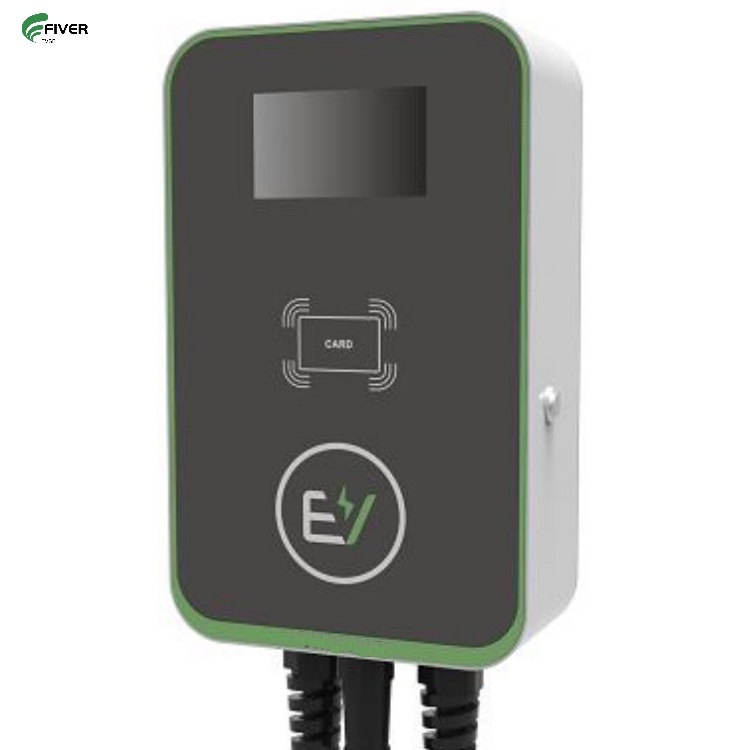 F-22-LR (Wire Plug Type)
F-22-LR (Wire Plug Type)
When it comes to our Top Recommendation for a non-smart charger,
FIVER F-22-LR (Wire Plug Type)
it's hard to beat the value of the is a no-nonsense unit that can deliver up to 32-amps (7.7 KW), has a aluminum case, its one of the most affordable high-power Level 2 chargers available today.
You can adjust the output from 16-amps (3.8 kW) all the way up to 32 amps (7.7 kW), and do so with internal DIP switches instead of an app for an added level of safety and code compliance. Not many EV chargers allow that flexibility.
#how to choose a ev charger #Portable EV Charger #hardwired ev charger #smart ev charger #level 2 ev charger #type 1 ev charger #SEA J1772 #IEC62196 #level 2 type 2 ev charger
Categories
Latest News
Contact Us
Contact: Jerry Zhan
Phone: WhatsApp: +8618028699987
Tel: +86-023-20791348
Add: No.2201,AESC Center, Yubei District Chongqing China
